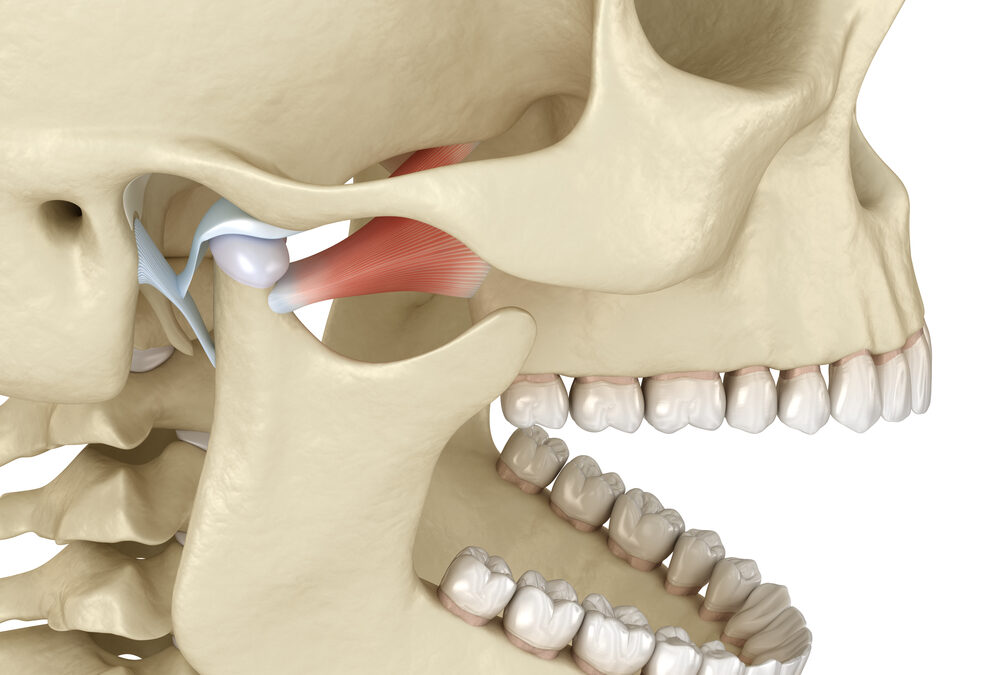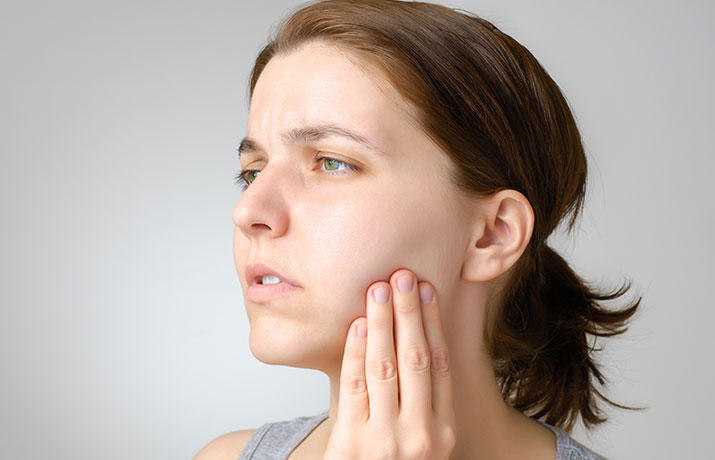If you’re reading this, there’s a good chance you have been diagnosed with either TMJ disorder or bruxism. Both conditions can cause pain and other symptoms in your jaw and teeth. While they may seem similar, their cause, treatment, and symptoms are very different. In this article, you will learn about the differences between having a disorder in TMJ vs bruxism, their common triggers, and the most recommended treatments.
What Is Temporomandibular Disorder (TMD)?
Temporomandibular Disorder (TMD) is a condition that affects the temporomandibular joint (TMJ), which is located in the jaw and connects your lower jaw to your skull. TMJ is responsible for allowing you to open and close your mouth and speak clearly by moving up and down.
When someone has TMJ disorder or TMD, they might experience pain or tenderness on one of both TMJs. They may also have an aching pain in and around their ears, facial pain, and discomfort when chewing food and opening their mouth when yawning. They may also have headaches or trouble sleeping because of how much stress this causes on their body.
They may also grind their teeth, which is why it can be confused with bruxism alone.
TMD Common Causes And Triggers
- Stress can have a negative impact on your jaw joints, causing them to become inflamed or irritated. This can lead to TMJ disorder, characterized by pain in the jaw joint area and limited movement of this joint.
- Dentures that don’t fit properly or are ill-fitting can cause problems with your bite alignment, triggering symptoms of TMD such as headaches and facial pain.
- Typing/playing video games/reading with poor posture or while lying on your back will increase pressure on the TMJ, causing pain or discomfort in this area.
- If you grind your teeth at night while sleeping, this may put extra stress on the TMJs.
Treatments For TMD
When it comes to treating TMD, there are a variety of options. Medication can be prescribed to help alleviate pain and reduce symptoms. Injections may also be used to treat TMJD by reducing inflammation in the jaw joint or muscles around it. Surgery may be recommended if you have chronic pain that doesn’t respond well to other treatments. Finally, physical therapy may be an option for those who have recently experienced an injury or trauma that has caused TMJD symptoms.
What Is Bruxism?
Bruxism is a condition in which the jaw muscles clench or grind together. People who have this condition typically do these unconsciously at night. Nevertheless, some people also grind their teeth during day time or whenever they face stressful situations.
Bruxism is most commonly associated with stress and anxiety and can cause headaches, tooth wear, and pain. Diagnosing this condition is difficult, but dentists can help in noticing common signs, including abnormal wearing or chipping of teeth.
Bruxism Common Causes And Triggers
- Stress is a common cause of bruxism, which can be triggered by events such as an illness or death in the family.
- A lack of sleep can also cause you to clench your jaw while sleeping, leading to TMD symptoms and even tooth damage over time that requires professional treatment.
Treatments For Bruxism
The first step in treating bruxism is to see a dentist. They can help you figure out if you have TMJ disorder, and if so, what kind of treatment would be best for your case. One of the most common treatments is wearing a mouth guard at night while you sleep. This will help protect your teeth and prevent any further damage from occurring while you’re sleeping. If bruxism is severe and is also causing jaw pain and other symptoms, your dentist will recommend you see an orofacial pain specialist who is a dentist specializing in the treatment of TMD and other facial pain, headache and dental sleep medicine. The orofacial pain specialist will do a thorough evaluation and treat bruxism and related symptoms.



